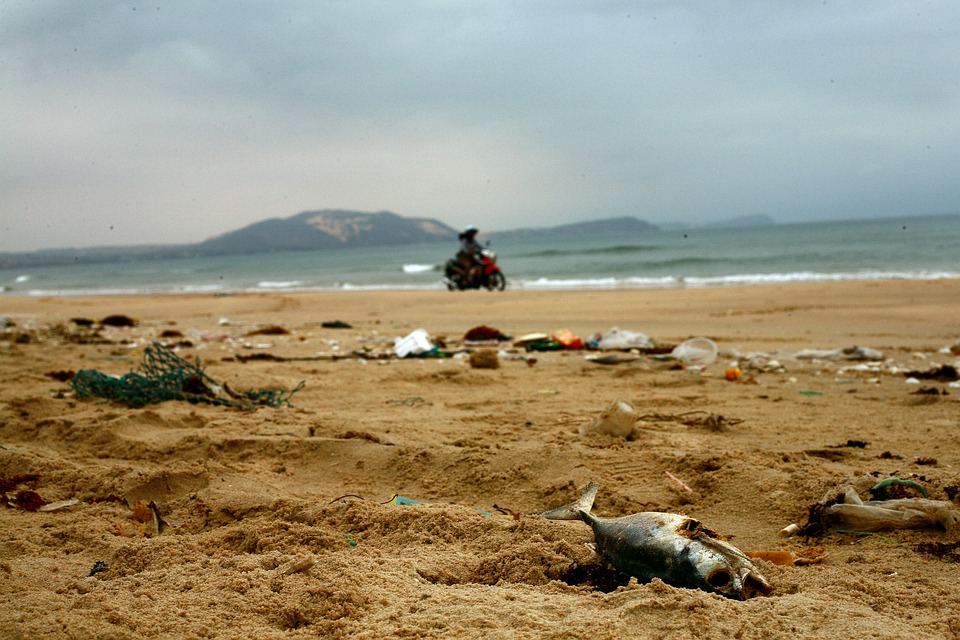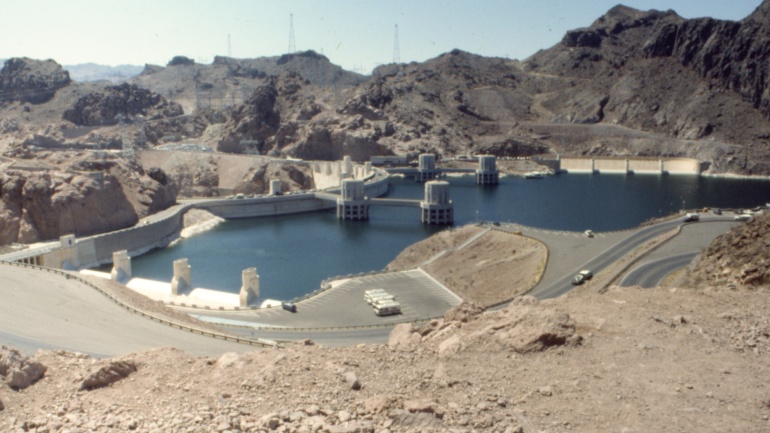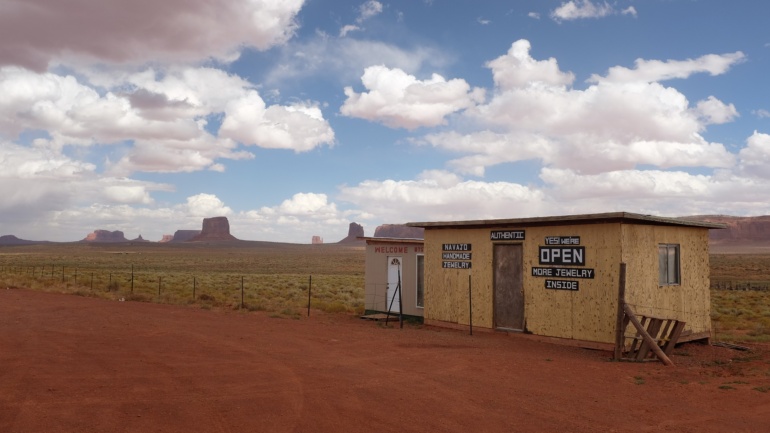By Eric Labrador, Publishing Staff Writer & Researcher for Save The Water™ | May 4, 2018
Plastic pervades a person’s daily life and its use has created an unhealthy relationship with a toxic after-effect. The market for plastic packaging dominates every part of consumer-life from meat packaging to grocery bags.1 For example, everyone loves getting salad, pasta, or a wrap from the supermarket in a hard plastic package. But the problem with all of these uses is that they become trash after 15 minutes.
According to a report by the Ellen McCarthur Foundation, plastic production rose to 314 million tons of plastic as of 2014 and to 335 million tons by 2016. Of this amount, 72 percent of the plastic finds its way into either landfills (40 percent) or into the environment (32 percent) on shorelines and in the ocean itself.1 Plastic trash in the ocean forms island-like blobs called “garbage patches.” The most famous blob is the “Great Pacific Garbage patch.” In 2018, the Great Pacific Garbage Patch is 1.6 million square kilometers, which is more than double the size of Texas or three times the size of France.2 As of 2014, there are 250,000 tons of trash in the world’s oceans.1
A Natural Assembly-Line
When you hear about “The Great Pacific Garbage patch,” you may think that there is an actual island of garbage in the ocean. Maybe you think that is a place where people could physically stand. Thirty-two percent of plastic (314 million tons as of 2015)1 reaches the oceans, where it makes up the world’s garbage patches. In reality, most of the trash in the ocean are identifiable objects, such as trash bags, straws, fishing nets, and plastic rubber duckies.3 Now the ratio of plastics to fish in the oceans stands at 1 plastic bottle for every five fish, with the ratio dropping to 1:3 by 2025.1
For example, a simple cellophane plastic bag is aerodynamic and catches the wind. The wind can carry the bag from a trash bin or someone’s car to a river system.3 Then the bag travels out a sewer pipe and into the ocean.3 The oceans’ currents and gyres pull the trash out into a patch in an “assembly-line” like fashion. The currents carry the trash, and the gyres trap the trash into a vortex or whirlpool. There are gyres in all the world’s major oceans so there are “garbage patches” all around the world. Through the constant beating of the sun, the plastic breaks down into microplastics.
These microplastics look like plankton to fish. So fish eat them. Because microplastics don’t biodegrade, they bioaccumulate in fish. In turn, bigger fish eat these fish. This food chain produces biomagnification, which is the process by which a pollutant increases its concentration in tissues as it travels up the food chain. As a result, microplastics poison the food chain all the way up to human beings.4
Is the Battle for the Oceans Lost to the Garbage Patch? Nope.
Because of the extent of the trash, many scholars have said that trawling the ocean with scrapers to pick up the plastic is not possible. Despite this, some, such as The Ocean Cleanup, spearhead efforts to pick up trash. The Ocean Cleanup has created a passive screen to collect the trash at the water’s surface. And they aim to pick up 50 percent of the trash in the Great Pacific Garbage patch in five years.6 They will begin to deploy these screens in mid-2018.6 But the best solution is to stop the trash before plastic gets into the water.
Can We Stop the Plastic Before it Reaches Our Oceans and Forms a Garbage Patch?
Some say no. And this cynicism is real. First, we can increase recycling efforts, but individual consumers’ behavior can negate organizations and businesses’ efforts. For example, National Geographic’s Greendex report of 2014 rated American consumers and found that consumers don’t practice sustainable behavior and do not feel guilty about their effect on the environment.10 Additionally, waste management companies recycle and reuse only 5% of the plastic collected.
Second, we can stop plastics from reaching the ocean. One solution is to ban single use plastic bags in supermarkets and other business. To stop trash from continuing to accumulate in the ocean, people can stop littering. As we reduce litter along the shoreline, we reduce plastics that go into the ocean. Recently, the United Kingdom is planning to ban plastic straws, stirrers, and plastic-tipped cotton swabs from the country as part of a campaign to combat single-use plastic pollution.9
Third, we could start using better technology. For example, biodegradeable plastics, including bags, have also been introduced into the market to replace the common cellophane plastic bags, which take a lot of oil to produce. Worldwide, the costs of collecting the trash are nearly double the profit ($75 billion vs. $40 billion).1 But businesses and people need to set up the secondary market for plastic to improve very poor five percent reuse.
We Could Stop Buying Bottled Water.
Lastly, we can stop buying bottled water. In reality, however, most bottled water is filtered tap water. In other words, despite the marketing, that water is not romantically taken from remote, untapped areas of the world. The consumption of bottled water also is another area that a customer can have an effect. For example, a gallon of bottled water costs $1.21 to produce compared to an EPA calculation that 1,000 gallons of tap water cost only $2 to treat.8
What can be done?
Plastic has become a part of everyone’s life, so much so it has become “a member of the family”. As we wrestle with this fact, individuals, groups, and families can practice sustainable behavior and be more aware of the effects of single use plastic. We can help reduce plastic garbage patches in our oceans through our actions:
- Bring our own bags when we go to the supermarket
- Drink tap water
- Take reusable cups and bottles with us on long trips
- Buy reusable products instead of single-use products
- Stop littering
- Pick up trash along the shorelines
You can also support Save the Water’s work in monitoring and detecting pollutants in rivers that eventually reach the ocean.
References
- Ellen McCarthur. January 19, 2016. “The New Plastics Economy: Rethinking the future of plastics”, https://bit.ly/2KuV1DM
- Marian Liu. March 23, 2018. “Great Pacific Garbage Patch now three times the size of France.” CNN. https://edition.cnn.com/2018/03/23/world/plastic-great-pacific-garbage-patch-intl/index.html
- Plastinography.org, plastinography.org/lesson1/how-does-plastic-reach-the-ocean.html.
- High-Level Science Review for ‘A Plastic Oceans’ Film. https://binged.it/2HLGfqv
- John Schneider. November 27, 2013. “Australian Waters polluted by harmful tiny plastics.” the conversation.com, http://theconversation.com/australian-waters-polluted-by-harmful-tiny-plastics-20790
- www.theoceancleanup.com, The Ocean Cleanup. https://www.theoceancleanup.com/technology
- Marcus Eriksen, et al. (2014) Plastic Pollution in the World’s Oceans: More than 5 Trillion Plastic Pieces Weighing over 250,000 Tons Afloat at Sea. PLoS ONE 9(12): e111913. https://doi.org/10.1371/journal.pone.0111913
- Jackie Dana. July 23, 2016. “Bottled Water vs. Tap Water: Which one is best for you?” learn.allergyandair.com. https://learn.allergyandair.com/bottled-water-vs-tap-water/
- Laurel Waimsley. April 19, 2018. “To curb ocean pollution, U.K. may ban plastic straws, stirrers and plastic tipped cotton swabs.” npr.org, https://n.pr/2K0A8jR
- Angelo Eliades. April 12, 2017. “Do people really care about the environment?” Permaculture Research Institute, https://permaculturenews.org/2017/04/12/people-really-care-environment/





